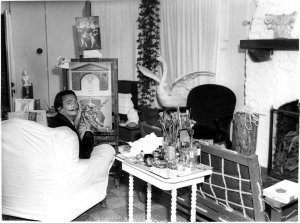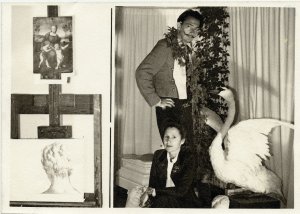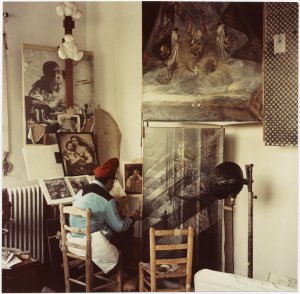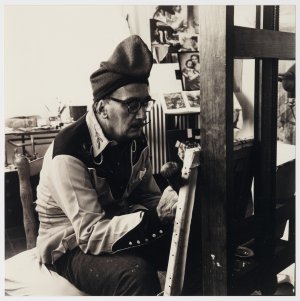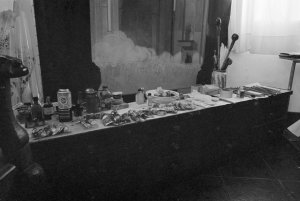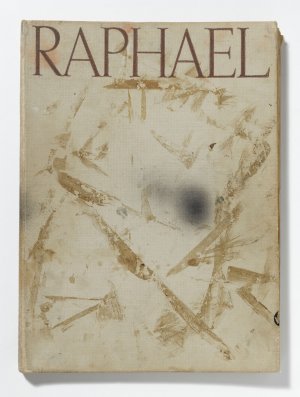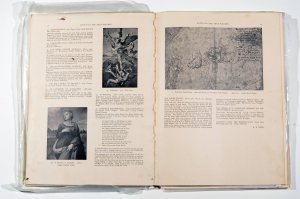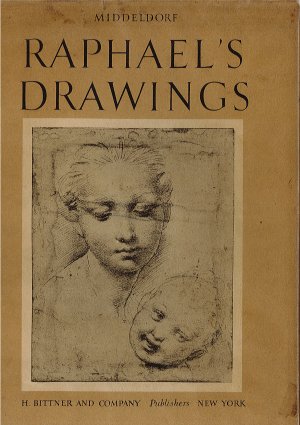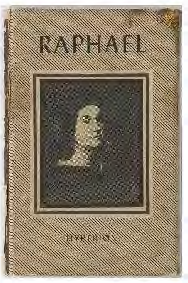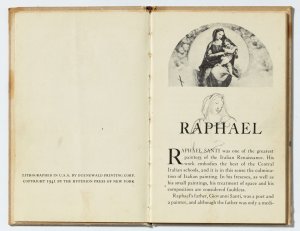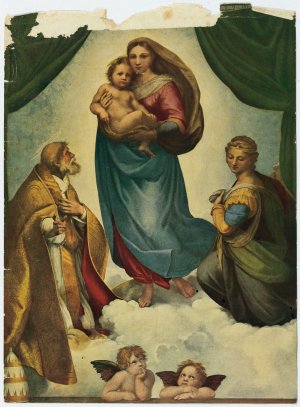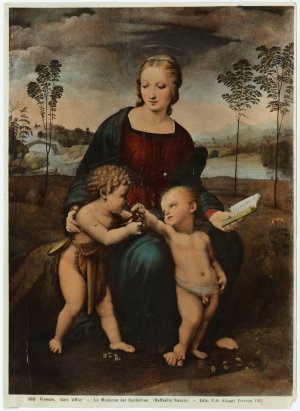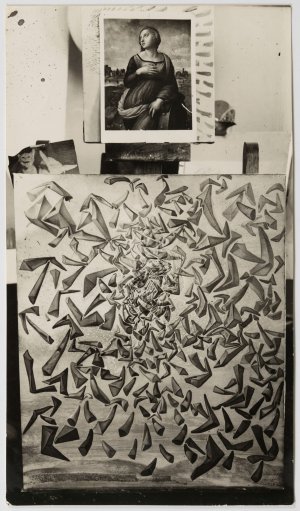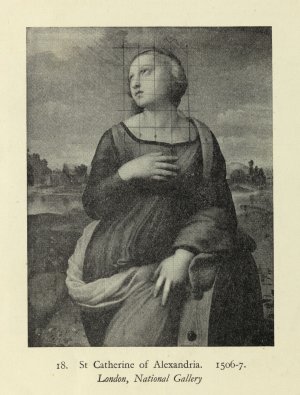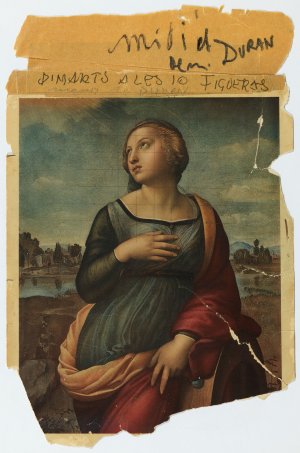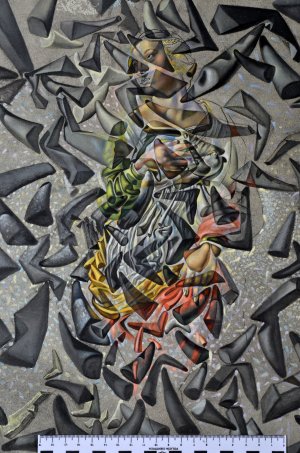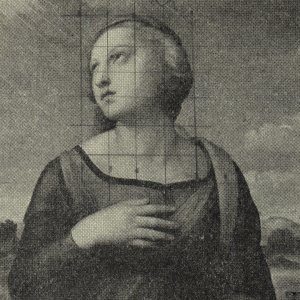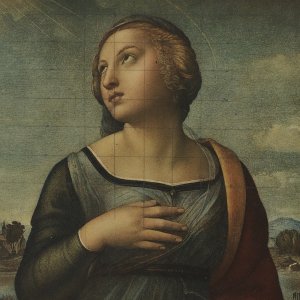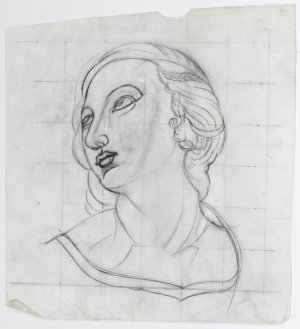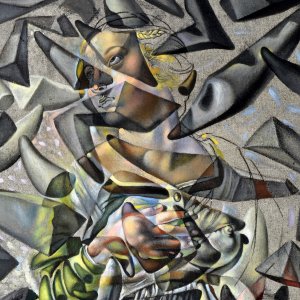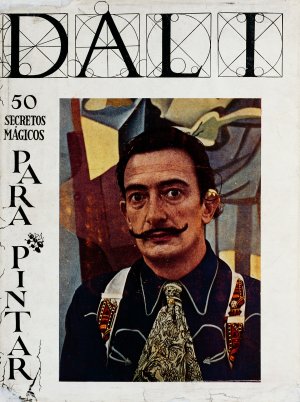In Dalí's Studio

Irene Civil Plans - Head of conservation and restoration
On the Working Method in The Ascension of Saint Cecilia
The large number of photographs of the various settings in which Salvador Dalí worked in the course of his creative career, preserved in the photographic archive of the Centre for Dalinian Studies at the Fundació Gala-Salvador Dalí, enable us to enter into some of the secrets of the artist's studio. If we look at the photographs from the 1940s of his studios on the Monterey peninsula in California (il. 2, 3), or those from the 1950s of Portlligat (Dalí's studio par excellence)(il. 4, 5, 6), we are immediately struck by the close confines and feverish environment in which Dalí worked.
The artist's easel is surrounded by small tables covered with all kinds of tools and materials, such as tubes of pigment, spatulas and brushes and little pots of oil and varnish. We can see that Dalí liked to work on several paintings at once: these are set up on easels or leaning against the furniture, between the spotlight and the multitude of objects that the artist collected and painted. There are also several preparatory drawings and inspirational photographs hung on the wall or affixed to the easel itself: an example of this is the persistent presence of reproductions of such paintings by Raffaello Sanzio - Raphael - as the Madonna of the Goldfinch (il. 2, 3, 13), the Sistine Madonna (il. 4, 5, 12) or the Deposizione Borghese. In addition, the various art books we see propped open at some significant illustration show us the extent to which such images were a key element in the artist's creative process and method of work.
At the present time most of these books are conserved in the Centre for Dalinian Studies, together with the rest of Dalí's library and his personal archive. In particular, the Centre has a set of magnificent volumes on the art of Raphael (il. 7, 9,10), whose pages bear witness to how often they were consulted and worked on by the painter. It is not uncommon to find whole leaves torn out; pages daubed with paint; illustrations cut out, with square grids drawn on them (il. 8), and even the occasional Raphaelesque pencil sketch by Dalí (il. 11). The great Renaissance artist was one of Dalí's crucial references throughout his artistic career, and in the case of The Ascension of Saint Cecilia[1], the oil painting we present in the exhibition Dalí-Raphael, a Prolonged Revery, Dalí was inspired by Raphael's painting Saint Catherine of Alexandria (il. 14). What is more, we can see that from his surrealist period on Dalí used a variety of reproductions and photographs from diverse sources not only as inspiration but also as elements to be incorporated into the composition of his paintings. These images include, as we have seen, plates of illustrations from art books (il. 12, 13, 16), and magazines, as well as photographs of the artist's models, such as Gala, taken in Dalí's studio by the photographers with whom he worked. This set of images used as preparatory material are of enormous value in understanding one of the working methods used most extensively by the artist in his creative process from the 1930s on.
The working process
In this way, the Catalan painter took the figure of Saint Catherine (il. 15, 16) as a studio material in the technical process of executing his painting. Once Dalí had chosen the image he wanted to incorporate into his composition - in this case, the reproduction of Raphael's painting - he copied it, traced it and transferred it to the canvas. But, how did he do this? What was his working process? Here Dalí used the square grid method (il. 18, 19). one of several traditional means of transferring an image from one support to another and enlarging or decreasing the dimensions of the figure. The drawing of a regular grid on the plate reproducing the image of the saint made it much easier to scale up the figure when it was copied in pencil on a sheet of tracing paper as a prelude to transferring it to the canvas by means of the transparent sheet (il. 20).
The selection of the preparatory materials that Dalí used for The Ascension of Saint Cecilia being exhibited at the Fundació Gala-Salvador Dalí for the first time includes the black and white print of Raphael's Saint Catherine of Alexandria cut out of a book, featuring the grid of pencil lines over the face (il. 15, 18), and the colour plate of the same work, also with a grid drawn in pencil on the area of the face, with rips in the paper and a strip of masking tape on the upper edge, probably to hold the tracing paper in place (il. 16, 19). The Fundació also has the pencil drawing of the face of Saint Cecilia on a sheet of transparent plastic (il. 20). on which the grid and the scaled-up dimensions indicate that the painter went on to use this reticulated drawing for his painting Explosion of Mystical Faith in the Midst of a Cathedral[2], probably from 1974 - yet another instance of the artist's recurring tendency to reuse images in his works. Here again we see the extent of Dalí's command of technical resources and delight in playing with them.
Since the 1940s, Dalí had been proclaiming himself a follower of the Renaissance classical tradition and developing his interest in technique, to the point of writing a book to guide aspiring painters, 50 Secrets of Magic Craftsmanship (il. 22), in which, among other technical tips and insights, he explains his own working method step by step[3], although his tireless creative activity went far beyond matters of technique. Dalí attached little or no importance to whether the figures and other elements in his paintings were copied, and pointed out that even Raphael had copied from Perugino's works[4]. Dalí regarded technical resources as means to achieving his ultimate objective, which entailed the integration of several images into a singular composition conceived in accordance with the cosmogony of the moment, which in the case of The Ascension of Saint Cecilia is the mystical nuclear phase. So it is that in this painting Salvador Dalí presents the image of the saint as fragmented and floating (il. 21).
-
Catalogue Raisonné of the Paintings of Salvador Dalí, No. 706.
-
Catalogue Raisonné of the Paintings of Salvador Dalí, No. 752.
-
Salvador Dalí, 50 Secrets of Magic Craftsmanship, Dial Press, New York, 1948.
-
Alain Bosquet, Conversaciones con Salvador Dalí, 1966, en Obra completa, vol. VII, Entrevistas, Destino - Fundació Gala-Salvador Dalí - Sociedad Estatal de Conmemoraciones Culturales, Barcelona-Figueres-Madrid, 2006, p. 1074.



